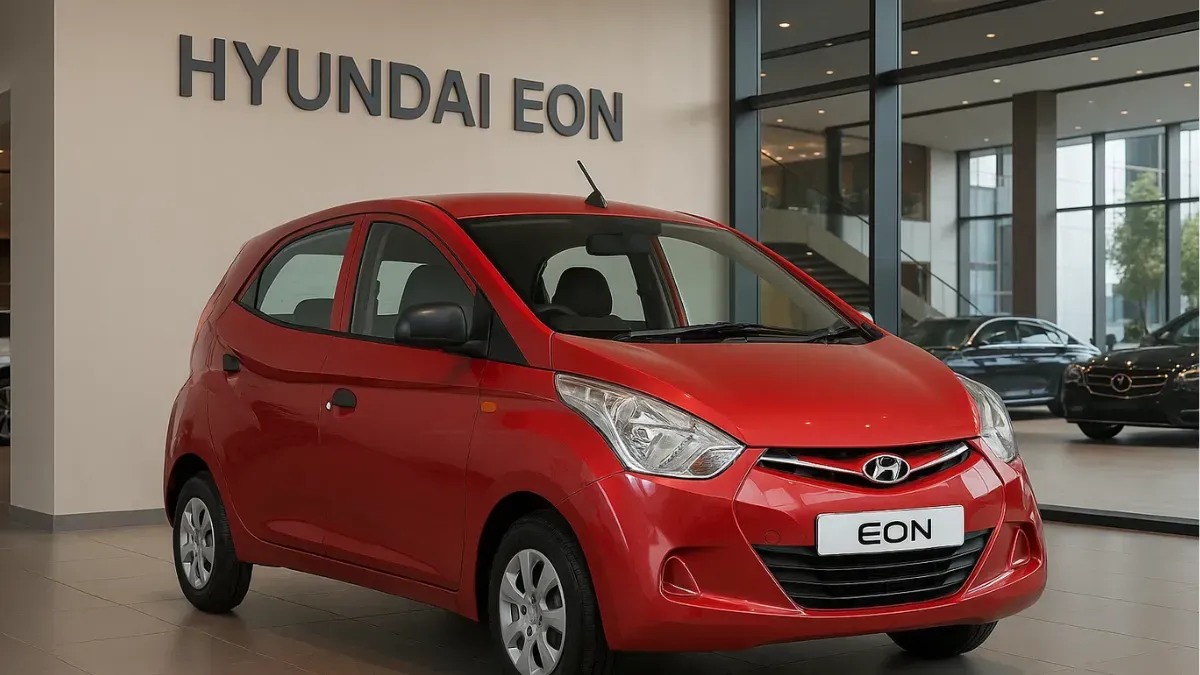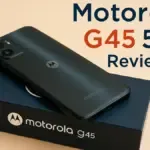The Hyundai Eon has always been one of the most recognized budget-friendly hatchbacks in the Indian automobile market. Known for its stylish design, affordability, and reliable performance, the Eon was designed to meet the needs of first-time buyers and small families. Even though Hyundai discontinued the model in 2019, it remains a popular option in the used car market because of its practicality, low maintenance cost, and excellent fuel efficiency.
Hyundai Eon: Exterior Design and Style
The first thing that attracted buyers to the Hyundai Eon was its fluidic design language. Unlike most entry-level cars of its time that looked plain and boxy, the Eon stood out with its sleek curves and sporty looks. The front design came with a signature hexagonal grille, sharp headlamps, and a smart bumper that gave it a premium touch. The side profile displayed flowing lines, well-proportioned doors, and stylish wheel arches. The rear end also looked attractive with compact tail lamps and a clean design.
This focus on design made the Hyundai Eon look more modern compared to its main rival, the Maruti Alto 800.
Hyundai Eon: Interior and Comfort
Stepping inside, the Hyundai Eon offered a cabin that was far more premium than most budget hatchbacks. The dual-tone dashboard, silver accents, and neat layout gave a sense of sophistication. The seating arrangement was comfortable for four adults, although five passengers could fit for short trips. The front seats were supportive, while the rear offered enough legroom for average-sized passengers.
Another big plus point was the 215-liter boot space, which was quite large for its segment, making it a practical option for small families. Hyundai clearly focused on providing a comfortable ride without compromising affordability.
Hyundai Eon: Engine and Performance
The Hyundai Eon was powered by two petrol engine options during its lifecycle. The 0.8-liter petrol engine delivered around 55 bhp, which was sufficient for city commutes and light highway use. Later, Hyundai introduced a more powerful 1.0-liter petrol engine producing 68 bhp. This variant appealed to buyers who wanted more power without losing fuel efficiency.
Both engines were paired with a 5-speed manual transmission, which was smooth and easy to use, especially for first-time drivers. While the Eon was not built for high-speed performance, it excelled in urban conditions, offering nimble handling and responsive controls.
Hyundai Eon: Mileage and Efficiency
One of the main reasons for the Eon’s success was its excellent mileage. The smaller 0.8-liter engine offered a fuel efficiency of around 21–22 kmpl, while the 1.0-liter variant delivered approximately 20–21 kmpl. This made it one of the most fuel-efficient cars in its class, ideal for budget-conscious families and daily commuters.
The combination of mileage, low running costs, and affordable spare parts made the Hyundai Eon a practical and economical choice.
Hyundai Eon: Features and Technology
For an entry-level hatchback, the Hyundai Eon surprised buyers with its list of features. Depending on the variant, buyers could enjoy:
- Power steering and power windows
- Air conditioning with heater
- Music system with USB and AUX connectivity
- Central locking and keyless entry
- Tilt-adjustable steering
- Driver-side airbag in higher trims
These features were rare in the budget segment, and Hyundai used them to differentiate the Eon from competitors.
Hyundai Eon: Safety Features
Safety in budget hatchbacks has always been a concern. Hyundai addressed this by offering driver airbags in higher trims, along with standard features like child safety locks, engine immobilizer, and a reinforced body shell. While the Eon was not the safest car in its class, it still provided better protection compared to some rivals.
Hyundai Eon: Pricing and Market Position
At launch, the Hyundai Eon was priced between ₹2.9 lakh and ₹4.5 lakh (ex-showroom). This positioned it directly against popular models like the Maruti Suzuki Alto 800, Tata Nano, and Chevrolet Spark. Hyundai marketed the Eon as a stylish yet affordable hatchback that gave more value for money than the Alto, and the strategy worked well.
Hyundai Eon: Strengths and Weaknesses
Like every car, the Hyundai Eon came with its own strengths and weaknesses.
Strengths included:
- Stylish design that stood out in its class
- Excellent mileage and fuel efficiency
- Comfortable and premium cabin
- Affordable maintenance and wide service network
- Hyundai’s reputation for reliability
Weaknesses included:
- Limited engine power for highway driving
- Rear seat a bit cramped for three passengers
- Basic safety features in lower trims
Hyundai Eon: Why It Still Stands Out
Even years after being discontinued, the Hyundai Eon remains a strong contender in the used car market. Buyers still choose it because of its low running cost, stylish looks, and Hyundai’s dependable after-sales service. The car is particularly attractive for small families, students, and first-time drivers who want a compact and reliable hatchback for city use.
Conclusion
The Hyundai Eon proved that even an entry-level hatchback could look stylish and feel premium. It combined fuel efficiency, comfort, and affordability in one package, making it a great value-for-money car. Though it has been discontinued, it remains a popular option in the pre-owned car market because of its reliability, practicality, and modern design.
For buyers seeking a small car that is budget-friendly, efficient, and stylish, the Hyundai Eon will always be remembered as one of Hyundai’s most successful offerings in the Indian market.







